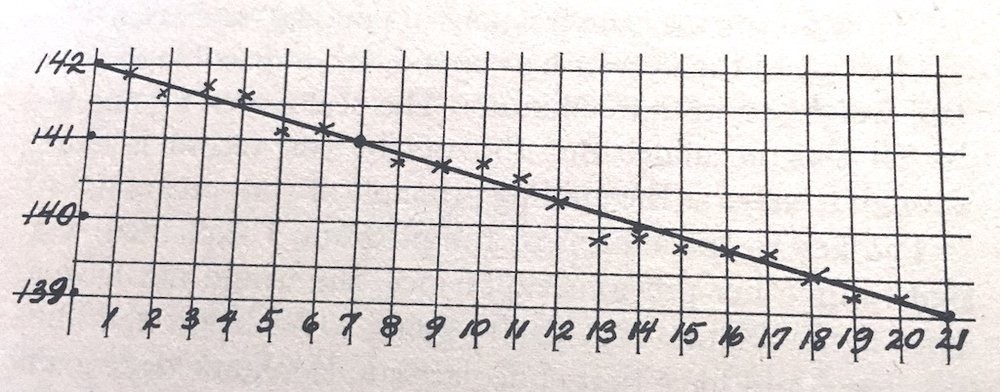The course was titled “Make A 5-Minute Documentary in 7 Weeks” but it was almost seven months before I uploaded my Teacher documentary to YouTube.
Here are some notes on the experience.
The People’s Channel
The class was held at The People’s Channel in Chapel Hill, where we learned the basics of using a Panasonic AC90 camera, recording video and sound, using an extra microphone, unpacking and packing the tripod, and so on. The class fee included an Individual Membership to TPC for a year, allowing us to check out the camera and use TPC’s iMacs for video editing.
All TPC asked in return was 1) don’t break anything and 2) the privilege of showing the documentary you made using their equipment. They include many of these short films about people and the community in their program rotations alongside their longer-form programming.
Shooting the Video
I shot all the footage in a single weekend. J. Michael Pope, the subject of the documentary, happened to be performing at a church that Sunday with one of his students. He also arranged lessons in his studio with four of his students that I filmed almost in their entirety. Plus, we did a 30-minute interview.
By the end of that weekend, I had about 8 hours of video. This is where it’s easy to intimidate yourself. How was I going to create a 5-minute video out of all that footage? Where do I even start?
Sage Advice
Local video artist and potter Jason Abide taught the class and passed along some good tips.
- Just sit and watch all the footage one time through without making any notes.
- The next time through, watch with a notebook. I gave each clip a name, and noted timings of when songs started or when Michael said or did something I thought illustrative of his teaching style. I also made notes on some themes I saw emerging from the footage.
- Don’t overthink this. Editing is mainly about cutting things away. Plonk the bits you like best in a row, and start cutting away the stuff you don’t like.
- Use jump cuts for transitions. Viewers are used to them from newscasts and television generally. You can always change the transitions later.
Final Cut Pro X
Shooting footage is easy; editing it into a product is hard. For the 7-week class, fully 5 weeks were spent coming to grips with Final Cut Pro, a struggle that lasted for months.
Despite Jason’s advice to keep it simple and just cut, “simple” and “Final Cut Pro” do not go together.
The trouble here was that, in addition to figuring out what we wanted to say with our movies, we also struggled with learning the basics of how to make Final Cut Pro X do anything. We could see in our minds’ eye what we wanted the finished product to look like, but FCPX did not make it easy for us to realize them.
Aside from the overwhelmingly busy interface, there’s also the FCPX nomenclature. I still do not know the difference between libraries, events, and projects and those are basic concepts in FCPX.
My Sad Sad Story, Boo-Hoo
I could possibly have bought FCPX for my iMac, but I did not want to pay $300 for an application I did not expect to use again.
This meant using the iMacs at TPC.
Trouble #1: they were only open till 7pm a few nights of the week, and I work first-shift. I could have rearranged my schedule but the work upheavals that drove me to take the class also compelled me to stay close to the office.
Trouble #2: the only other time TPC was open was Saturday from 10am–2pm. So I had a four-hour window once a week during which I would have to relearn how to use FCPX, reacquaint myself with my footage, and try to make some sort of visible progress.
Trouble #3: Sometimes TPC would be closed on Saturday! After the second time this happened, I sent myself an automated reminder every Friday to call TPC and check their Saturday schedule. This saved me wasted trips a couple of times.
So my hands-on time with the footage was limited and there would be some occasions, such as when we went on vacation, where I’d be gone for weeks at a time. Whatever momentum I’d built up would be long gone. Hence the months needed for editing.
Lessons Learned
- As Jason advised, don’t try to learn everything about FCPX. Search Google for “FCPX 10.3” (include the version number you’re using) to find specific help as you need it. Then write it down in a notebook so you find it faster next time!
- That said, search on “FCPX cheatsheet” or “FCPX keyboard shortcuts” and bookmark or print the more helpful items. Jason encouraged us to learn and use basic keyboard shortcuts we’d use 98 percent of the time: start, stop, reverse, forward, zoom in to the timeline, etc.
- I found a few excellent Lynda.com FCP tutorial videos that I returned to often. On Saturdays, I’d start my work session by looking at the tutorials to review and remind myself of the technique or method I would use that day.[1]
- Dedicate a notebook to the project and use it to collect your notes on timings, themes, learnings, etc. I noted FCP key shortcuts in the back of my pocket Moleskine.
- I spent weeks simply reviewing the footage, and marking and organizing sections of clips for both the interview and the b-roll (or secondary) footage. This made compiling the first half of the video go more swiftly than I expected.
- As the video took shape, I’d start each work session by watching it through twice, noting any nips and tucks that were needed, deciding on the next steps, etc.
- I treated Michael’s interview as if it were recorded for radio. I edited, trimmed, and clipped silences, hesitations, etc. so it sounded tight. I knew I could cover the awkward jump cuts with my b-roll footage illustrating whatever he was talking about.
- As Faulkner said, “Kill your darlings.” When I got rid of the bits that I really loved, the story fell into place.
- I saw the movie in layers. Get the interview foundation solid, then add b-roll on top of that to add visual interest and variety, then play with the audio so the music or interview would fade in and out, then add the titles and credits. And then, sit and watch it over and over to tweak as needed till it looked smooth, to my eye.
- Near the end, I thought I needed three full 8-hour days to finish the thing. But by working on it a little at a time, I discovered to my surprise that I was done after only two Saturday sessions. I was stunned at how quietly it came together.
- I learned yet again that I can start from a place of zero knowledge and create something. I just have to keep showing up and doing the work.
- Some creative decisions are ones of necessity, but they can still be really good decisions.
- Some ideas come to you when you’re looking in the other direction. While I was making the bed one day, it occurred to me to end the movie with Pope saying “Excellent!” at the end of Ron’s solo. You hear him say it throughout the movie, so it’s natural and unforced.
- When I hit on ending the video with Pope exclaiming “Excellent!”, I thought of it as simply a nice button so we wouldn’t go out on a blank screen. He says this often during a lesson and it’s so expressive of his personality as a teacher. I didn’t realize till later that it could be interpreted on other levels: that he was proclaiming the movie as “Excellent!”, and that he was also saying it to the viewer who just sat through a mini-lesson with him.
- Be ready for that moment when a big project that has occupied your mindspace for months is now done. Because it will leave a vast echoing space behind and the question, “What next?” Have something waiting.
- Unfortunately, Lynda.com removed the best documentary-based FCP course, one that followed a producer making a news piece on enticing CEOs to consider U.S. veterans for jobs. I wish I had noted the producer’s name, because she had lots of great tips and advice that saved me loads of time. Alas, gone without trace. ↩


